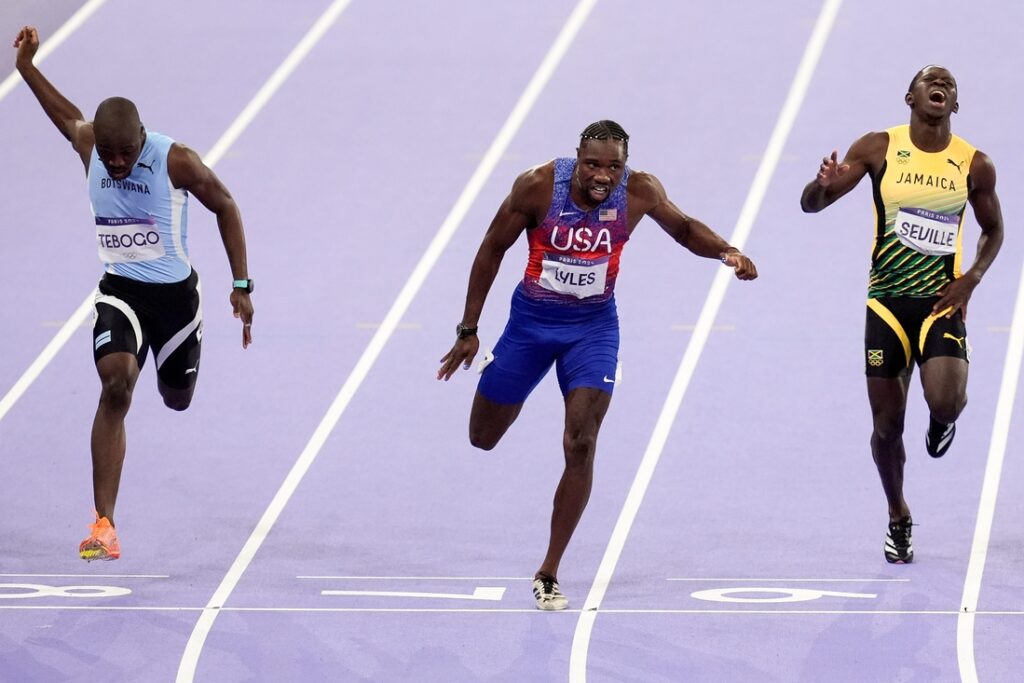Realistic Portrayals: The Need For Authentic Asian And Asian American Stories In Media

Table of Contents
The Perpetuation of Harmful Stereotypes
The underrepresentation of authentic Asian and Asian American narratives is deeply intertwined with the perpetuation of harmful stereotypes. These damaging portrayals not only affect individuals' self-perception but also limit opportunities and fuel societal prejudice.
The Bamboo Ceiling and Model Minority Myth
The "bamboo ceiling," referring to the invisible barrier preventing Asian Americans from reaching higher levels of professional success, and the "model minority" myth, which portrays all Asians as inherently intelligent, hardworking, and docile, are both deeply damaging. These stereotypes ignore the wide range of socioeconomic backgrounds and experiences within Asian communities, setting unrealistic expectations and silencing those who don't fit the mold.
- Examples: The constant portrayal of Asian characters as nerdy or tech-savvy, lacking in social skills or emotional depth, reinforces the “model minority” myth, neglecting the complexities of individual personalities.
- Statistics: Studies consistently show a lack of diverse representation behind the camera and in leading roles. For example, a recent study revealed that only a small percentage of leading roles in major films are played by Asian and Asian American actors.
- Impact: This lack of representation impacts self-esteem and mental health, especially for young Asian Americans who may struggle to see themselves reflected in positive and diverse ways. It also limits opportunities for advancement in various fields, perpetuating systemic inequalities.
Fetishization and Exoticization
Asian and Asian American characters are often subjected to fetishization and exoticization, reducing them to sexual objects or exotic "others." This objectification erases their individuality and reinforces harmful power dynamics.
- Examples: The hypersexualization of Asian women as submissive or exotic "dragon ladies," and the portrayal of Asian men as emasculated or hyper-masculine, are just two examples of damaging tropes.
- Harmful tropes: The "lotus blossom" archetype for women, and the "fu manchu" villain archetype for men, are deeply rooted in historical prejudice and continue to perpetuate harmful stereotypes.
- Impact: This objectification has serious real-world consequences, contributing to a climate of harassment and discrimination against Asian individuals.
Lack of Nuance and Complexity
Often, Asian characters in media lack depth and complexity, reduced to simple tropes and stereotypes. This one-dimensional portrayal undermines their individuality and prevents authentic representation of the rich tapestry of Asian experiences.
- Examples: Characters are often defined solely by their ethnicity, becoming a "nerdy Asian," a "martial arts expert," or a "quiet and obedient daughter." Their stories rarely extend beyond these limited descriptors.
- The need for nuanced characters: We need to see characters with their own unique personalities, flaws, ambitions, and struggles, not just as representatives of their ethnicity.
- Impact: This lack of nuance creates a distorted image of Asian communities, perpetuating misunderstandings and limiting the possibilities for authentic storytelling.
The Importance of Authentic Storytelling
The solution lies in prioritizing authentic storytelling, empowering Asian and Asian American voices to shape their own narratives.
Empowering Asian and Asian American Voices
Giving creators from the Asian and Asian American community the platform to tell their own stories is paramount. This means actively seeking out and investing in diverse talent, both in front of and behind the camera.
- Examples: Shows like "Fresh Off the Boat" and "Everything Everywhere All at Once" demonstrate the power of authentic representation when creators from the community are at the helm.
- Diverse production teams: Having diverse writers' rooms, directors, producers, and actors ensures that the stories are not only told from an authentic perspective, but also reflect the multifaceted nature of the Asian and Asian American experience.
Reflecting the Diversity Within Asian Communities
The Asian diaspora encompasses a vast array of cultures, ethnicities, and experiences. Authentic storytelling must reflect this diversity, avoiding the homogenization of distinct cultures and backgrounds.
- Different Asian countries and cultures: From the vibrant culture of India to the rich traditions of Japan, Korea, China, the Philippines, and countless other nations, the Asian experience is incredibly diverse and deserves to be portrayed accordingly.
- First-generation vs. multi-generational Americans: The experiences of first-generation immigrants often differ greatly from those of Asian Americans born and raised in the United States. These diverse stories must be included to present a complete picture.
Promoting Understanding and Empathy
Authentic representation in media can foster understanding and empathy between different cultural groups. By showcasing diverse experiences and perspectives, we can challenge prejudices and promote a more inclusive society.
- Challenging misconceptions: Authentic storytelling can humanize Asian and Asian American characters, combating the harmful stereotypes that often fuel prejudice and discrimination.
- Shaping public perception: Media plays a significant role in shaping public perception. By showcasing the full range of Asian and Asian American experiences, we can create a more accurate and nuanced understanding of these communities.
Strategies for Achieving Better Representation
Achieving genuine progress requires a multi-pronged approach that includes increased funding, inclusive hiring practices, and audience engagement.
Investing in Diverse Storytelling
More investment is needed to support Asian and Asian American creators and their projects. This includes increased funding for film and television productions featuring authentic representation.
- Initiatives to support diverse voices: Funding programs, grants, and mentorship opportunities are crucial for providing emerging Asian and Asian American storytellers with the resources they need to share their narratives.
- Prioritizing diverse representation: Studios and networks need to actively seek out and prioritize diverse projects and talent, ensuring that authentic representation becomes a priority, not an afterthought.
Implementing Inclusive Hiring Practices
Diversity must be prioritized at all levels of media production, from writers' rooms to casting departments. This requires a commitment to creating inclusive environments and opportunities for Asian and Asian American professionals.
- Strategies for increasing diversity: Actively recruiting diverse talent, implementing blind auditions, and creating mentorship programs are just a few strategies that can be implemented to increase diversity at all levels of production.
- Importance of mentorship: Mentorship programs can provide valuable guidance and support to emerging Asian and Asian American professionals, enabling them to thrive in the industry.
Holding Media Accountable
Audiences play a crucial role in demanding better representation. We need to actively engage with media, support authentic projects, and hold media companies accountable for their portrayals of Asian and Asian American communities.
- Supporting authentic media: Actively seek out and support media that accurately and respectfully represents Asian and Asian American experiences.
- Constructive criticism: Engage in constructive criticism and hold media companies accountable when their portrayals perpetuate harmful stereotypes or neglect authentic representation.
Conclusion
The need for realistic portrayals of Asian and Asian American experiences in media is not merely a matter of representation; it's about social justice, cultural understanding, and the creation of a more equitable society. The perpetuation of harmful stereotypes has far-reaching consequences, impacting self-perception, opportunities, and societal perceptions. By investing in authentic storytelling, empowering diverse voices, and implementing inclusive hiring practices, we can create a media landscape that truly reflects the richness and complexity of the Asian and Asian American experience. Let's demand and celebrate realistic portrayals of Asian and Asian American experiences in media, ensuring our stories are told truthfully and authentically.

Featured Posts
-
 I Frontida Tis Fonis Tis Tzesika Simpson
May 12, 2025
I Frontida Tis Fonis Tis Tzesika Simpson
May 12, 2025 -
 Herthas Struggles A Head To Head Between Boateng And Kruse
May 12, 2025
Herthas Struggles A Head To Head Between Boateng And Kruse
May 12, 2025 -
 Ftc Appeals Activision Blizzard Ruling Microsoft Deal Uncertain
May 12, 2025
Ftc Appeals Activision Blizzard Ruling Microsoft Deal Uncertain
May 12, 2025 -
 Undocumented Labor Migration Parliaments Intervention
May 12, 2025
Undocumented Labor Migration Parliaments Intervention
May 12, 2025 -
 Tyreek Hill Vs Noah Lyles Michael Johnsons Perspective On The Hypothetical Race
May 12, 2025
Tyreek Hill Vs Noah Lyles Michael Johnsons Perspective On The Hypothetical Race
May 12, 2025
